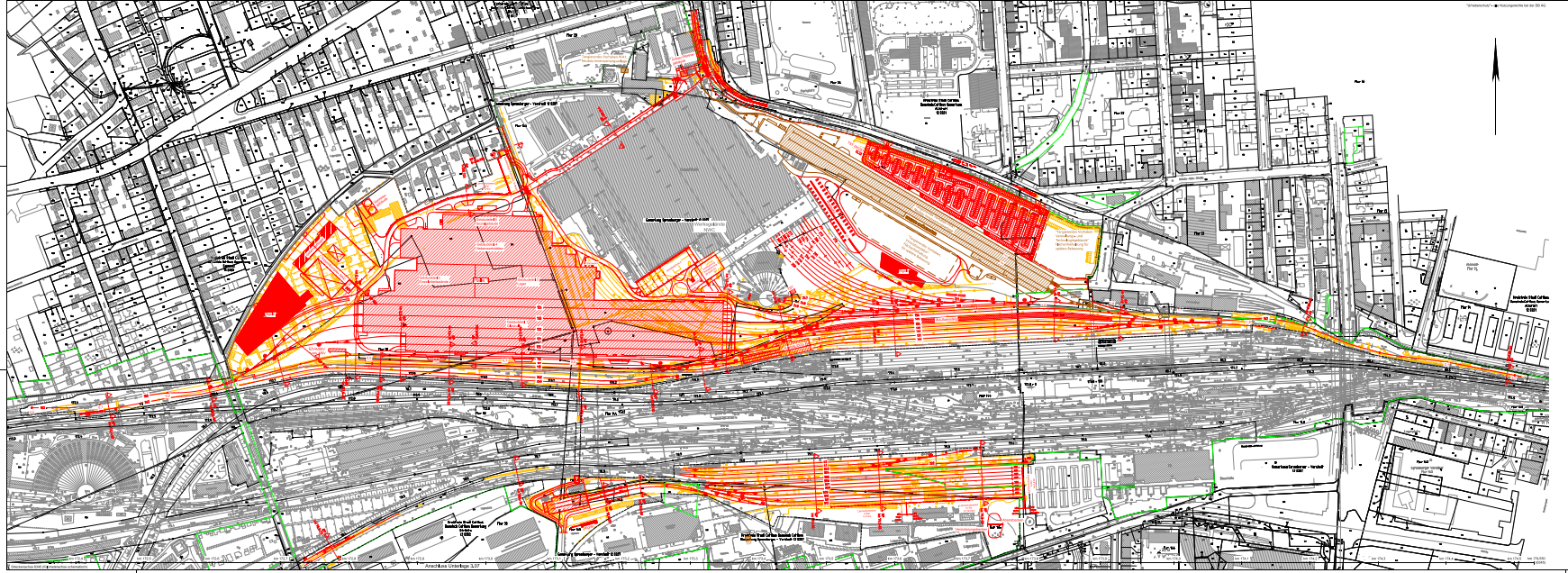
New Maintenance Plant Cottbus
High-Speed Train Maintenance Plant
Pilot Project of the Alliance Model at the German Railways (DB).
Currently the biggest and most modern railway maintenance plant of the German Railways is being built at the site of the traditional DB maintenance plant in Cottbus.
FCP provides comprehensive planning services for the outdoor facilities of the five-track Hall 1 by order of the Rhomberg Sersa Rail Group, which is responsible for underground engineering, track engineering, the erection of the outdoor facilities and the technical rail equipment.
Location
Cottbus, Germany
Client
Rhomberg Bahntechnik GmbH
Main Focus
Competence Centre
The project comprises the new building of two maintenance halls - a double-track hall with the dimensions of 445 x 33 m as well as a five-track hall with dimensions of 526 x 200 m including extensive outdoor traffic infrastructure. 1,200 new top industrial jobs will be created.
Planning offices as well as structural and civil engineering companies are integrated at a very early stage within the scope of the alliance model, which enables optimization of building cycles and building costs.
Rhomberg Sersa Rail Group, FCP and further planning partners will plan and build 58 new turnouts, several kilometres of track incl. overhead lines and technical railway equipment, roads, underground cabling works, crossing of the district heating network by means of micro-tunnelling under the tracks, several supporting structures, noise barriers and respective media supplies at the premises.
Planning is predominantly done in BIM, which provides for optimum covering of interfaces between the various planners and the trades, quick identification of conflicts and model-based bills of quantities.

„ The requirements for the design are manifold and require a high degree of creativity. “
Nadine Sinemus
The CC Water Management supports the design with the services surface drainage of the roof and traffic ways as well as rail drainage. The incoming precipitation waters are fed to seepage systems on the own property with advance mechanical purification. Complementarily a network for drinking water and firefighting water supply was designed. The required cleaning and retention systems for the retention and orderly drain were designed for the storage areas for hazardous substances. Due to the huge area a flooding analysis based on the programme HEC-RAS for the heavy rain events was modelled.


